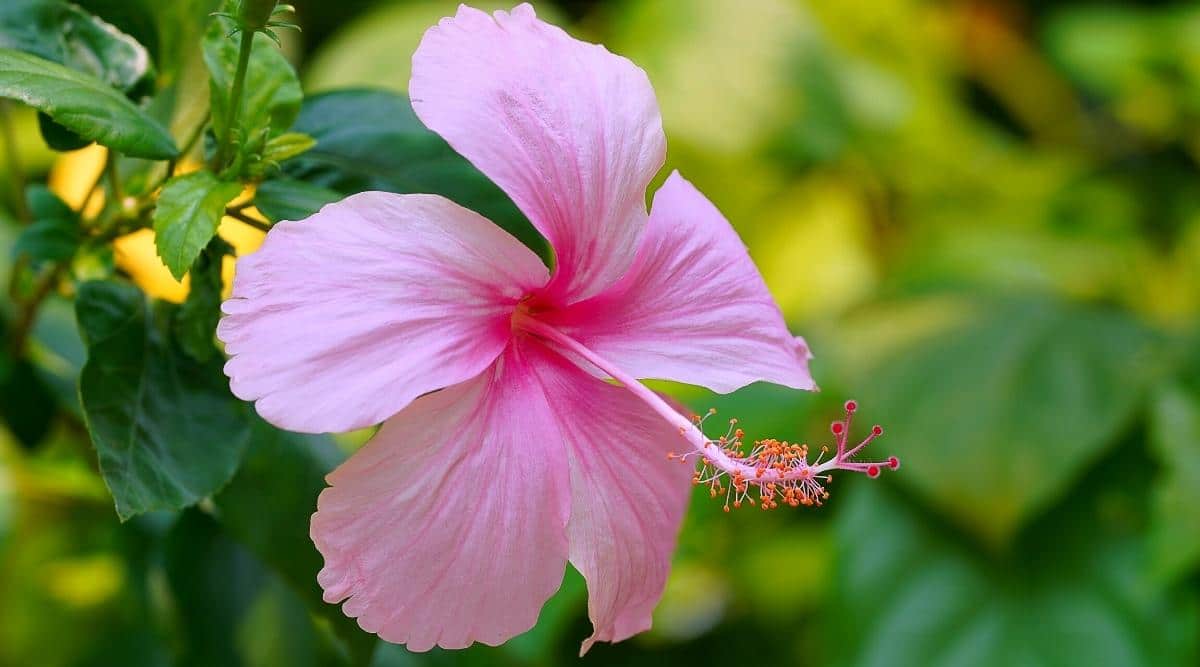Table of Contents
Which type of hibiscus is edible?
Hibiscus sabdariffa
Are all hibiscus flower edible?
What part of a hibiscus plant is edible? All parts of Hibiscus sabdariffa are edible: calyxes, leaves, and flowers. The calyxes are the ingredient used to make Hibiscus tea, a tangy Vitamin C-rich delight.
Are there any poisonous hibiscus?
Hibiscus No one knows the reason why some types of hibiscus are toxic while others remain non-toxic to canines. For cats both blossoms and stems of this hibiscus are poisonous.
Does hibiscus tea make you hallucinate?
To date, there’s no scientific evidence that suggests hibiscus tea hallucinations are real. So, no: Any cases of hallucinations have been purely anecdotal. Researchers haven’t studied this reported side effect or why people claim they are experiencing these symptoms.
How do I know if my hibiscus is edible?
What part of a hibiscus plant is edible? All parts of Hibiscus sabdariffa are edible: calyxes, leaves, and flowers. The calyxes are the ingredient used to make Hibiscus tea, a tangy Vitamin C-rich delight.
Which hibiscus flower is poisonous?
Hibiscus In most cases, hibiscus is non-toxic for pets, but the Rose of Sharon (Hibiscus syriacus) is a type of hibiscus that can be harmful to your furry friend. If a dog ingests a significant amount of this hibiscus’ flower, they can experience nausea, diarrhea, and vomiting.
Are perennial hibiscus edible?
As a general rule, all perennial hibiscus species are edible… young leaves and flowers have a mild flavor. The leaves, roots, and shoots are filled with a gooey substance (they are mallows – okra relatives) that is used to thicken soups and can even be whipped into a merengue.
Can you use any type of hibiscus for tea?
Only certain hibiscus plants can be used to make hibiscus tea. The flowers of H. sabdariffa and H. acetosella are commonly used when brewing hibiscus tea.
Which hibiscus flower is edible?
Commonly known as Rosella and Jamaican Sorrel, Florida Cranberry, and scientifically as Hibiscus sabdariffa, the flower, fruit, and leaves are all edible. Edible hibiscus is a short-day plant that grows in tropical and subtropical areas.
Are there any poisonous hibiscus flowers?
Hibiscus No one knows the reason why some types of hibiscus are toxic while others remain non-toxic to canines. For cats both blossoms and stems of this hibiscus are poisonous
Can hibiscus be toxic?
According to the University of Arkansas Division of Agriculture, hibiscus plants are considered x26quot;toxicity category 4.x26quot; This means that the plant and its blossoms are considered nontoxic to humans. They are not only nontoxic, they are also considered to have have health benefits.
Is Hibiscus rosa-sinensis poisonous?
Is Hibiscus rosa-sinensis poisonous? Hibiscus rosa-sinensis has no toxic effects reported.
Is any hibiscus flower edible?
Although sometimes grown for strictly ornamental purposes, hibiscus is also well known for its culinary and medicinal applications. You can eat the flower straight from the plant, but it is usually used for tea, relishes, jam or salads. Many cultures drink hibiscus tea for its medicinal properties.
Can you get high off of hibiscus?

To date, there is no scientific evidence of hibiscus tea side effects making people drunk and/or causing hallucinations. A common theory for why ‘hibiscus intoxication’ happens is that it’s result of peoples’ blood pressure becoming too low. As I mentioned, hibiscus tea is known for lowering your blood pressure.
What are the negative effects of hibiscus tea?
What are the risks of taking hibiscus? Side effects. Hibiscus may cause blood pressure to drop. It has also been linked to dermatitis, headache, nausea, and ringing in the ear.
Can tea make you hallucinate?
People with a higher caffeine intake, from sources such as coffee, tea and caffeinated energy drinks, are more likely to report hallucinatory experiences such as hearing voices and seeing things that are not there, according to the Durham University study.
How does hibiscus make you feel?
Some individuals have noticed feelings of dizziness, hallucinations, shortness of breath, and increased heart beat shortly after sipping hibiscus tea. Chemicals in hibiscus affect estrogen levels, especially in women, and cause hormonal changes in the body effecting some medications such as birth control pills.
What part of the hibiscus is poisonous?
Hibiscus sabdariffa
Are hibiscus poisonous plants?
According to the University of Arkansas Division of Agriculture, hibiscus plants are considered x26quot;toxicity category 4.x26quot; This means that the plant and its blossoms are considered nontoxic to humans. They are not only nontoxic, they are also considered to have have health benefits.
Can hibiscus tea be poisonous?
What are the risks of taking hibiscus? Side effects. Hibiscus may cause blood pressure to drop.It has also been linked to dermatitis, headache, nausea, and ringing in the ear
Are perennial hibiscus poisonous?
What part of a hibiscus plant is edible? All parts of Hibiscus sabdariffa are edible: calyxes, leaves, and flowers. The calyxes are the ingredient used to make Hibiscus tea, a tangy Vitamin C-rich delight.
What kind of hibiscus can you make tea from?
Hibiscus sabdariffa
Can you use any color hibiscus flower for tea?
What part of a hibiscus plant is edible? All parts of Hibiscus sabdariffa are edible: calyxes, leaves, and flowers. The calyxes are the ingredient used to make Hibiscus tea, a tangy Vitamin C-rich delight.
Is all hibiscus flowers edible?
What part of a hibiscus plant is edible? All parts of Hibiscus sabdariffa are edible: calyxes, leaves, and flowers. The calyxes are the ingredient used to make Hibiscus tea, a tangy Vitamin C-rich delight.
Can all hibiscus flowers be used for tea?
Hibiscus In most cases, hibiscus is non-toxic for pets, but the Rose of Sharon (Hibiscus syriacus) is a type of hibiscus that can be harmful to your furry friend. If a dog ingests a significant amount of this hibiscus’ flower, they can experience nausea, diarrhea, and vomiting.

